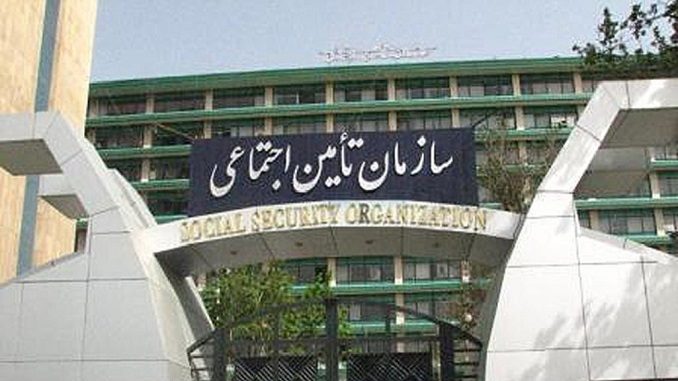
Members of the Iranian parliament have urged the government to start paying its massive debt to the country’s Social Security Organization. In a letter to President Hassan Rouhani on November 20, 157 MPs referred to a law requiring the government to pay its debts to the organization within 10 years and demanded that the government allocate sufficient funds for this purpose in its next year’s budget, Radio Farda reports.
The government’s debt to the Social Security Organization, a public institution that operates independently, is estimated to be more than $36 billion. Most of the accumulated debt is due to delayed government contributions to the fund and its interest.
Iran’s Social Security Organization provides health insurance and pension to its members that include workers, government employees, and even self-employed individuals. More than 42 million Iranians (ca. 52% of the population) receive some type of benefit from the organization.
The Social Security Organization provides services to the most vulnerable groups in the society, namely workers and therefore it is important for the government to meet its financial obligations, the Iranian MPs say. According to the letter, not paying the organization’s debts would weaken it which could have “undesirable” social, economic, and political consequences and finally lead to its bankruptcy as several other retirement funds have experienced.
Ahmad Alavi, an Iranian economist residing in Sweden is not optimistic that the demand of the Iranian MPs can be fulfilled. The government is already facing a massive budget deficit and has many other financial commitments that prevent it from being able to pay its debts to the Social Security Organization, Alavi told Radio Farda.
According to experts such as Alavi, most of the damage to the organization was inflicted during the Mahmoud Ahmadinejad’s administration, which wasted money on subsidies and “buying off” various individuals or groups by engaging in favoritism. Alavi also says that the government owes substantial amounts of money to private contractors too, who over the years have worked on government construction and other projects. One reason why some companies do not pay their workers on time is the fact that the government does not pay what it owes to these companies for work already completed.
Not paying workers’ wages for months leads to labor protests, which has become a frequent phenomenon in the past year. According to the officials of Iran’s Social Security Organization, the financial constraints have affected the quality of the services provided by their institution. The results of a recent poll conducted by the organizations shows that 52% of the pensioners are financially struggling.
Disputes over Iranian pension funds are coming to a boil, a former official with Social Security Organization in Legal and Parliamentary Affairs said. In a lecture titled “A Glance at the State of Pension Funds” at the Institute of Religion and Economic Studies in Tehran on Thursday, Mohsen Izadkhah also sought to scrutinize this unfolding crisis, the Persian daily Shargh reported as quoted by Financial Tribune.
There are 24 pension funds in the country, which are divided into public pension funds (Social Security Organization, the Armed Forces Pension Fund, the Civil Servants Pension Fund and Rural and Nomadic Insurance Fund) and exclusive funds (pension funds for employees of Islamic Republic of Iran Broadcasting, oil industry, banks, Central Insurance of Iran, municipalities). The state of Social Security Organization and the Civil Servants Pension Fund gives a comprehensive image of all other funds.
SSO has more than 13 million first named insured who account for 73% of the total number of all 24 funds insuring people. This fund has more than 3 million pensioners; the ratio of its insured workers to its pensioners is 4.25. The country’s other major fund, CSP, has more than one million first named insured while the number of its pensioners exceeds 1.2 million, suggesting that pensioners outnumber the employed insured population.
Currently, the benefits paid by the SSO and CSP cover 48% and 52% of the expenditures needed for a decent life, respectively. That’s why at least half of the retired population goes back to work despite all restrictive laws. In addition, nearly 30% of Iran’s population don’t have any insurance at all.
